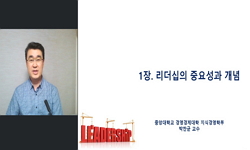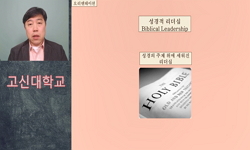본 연구의 목적은 대학교 무용 전공 학생들이 지각하는 무용 지도자들의 리더십 형태와 이들의 학생들에 대한 지도 열의 및 학생들의 지도자에 만족도를 알아보는데 연구의 초점을 두었다. ...
http://chineseinput.net/에서 pinyin(병음)방식으로 중국어를 변환할 수 있습니다.
변환된 중국어를 복사하여 사용하시면 됩니다.
- 中文 을 입력하시려면 zhongwen을 입력하시고 space를누르시면됩니다.
- 北京 을 입력하시려면 beijing을 입력하시고 space를 누르시면 됩니다.
https://www.riss.kr/link?id=T7911455
- 저자
-
발행사항
서울 : 연세대학교 교육대학원, 2001
-
학위논문사항
학위논문(석사) -- 연세대학교 교육대학원 , 체육학교육전공 , 2001. 2
-
발행연도
2001
-
작성언어
한국어
-
주제어
무용 지도자 ; 리더십 ; dance teachers ; leadership
-
KDC
685.1 판사항(4)
-
발행국(도시)
서울
-
형태사항
vi, 58p. : 삽도 ; 26 cm.
- 소장기관
-
0
상세조회 -
0
다운로드
부가정보
국문 초록 (Abstract)
전공에 따른 대학교 무용전공 지도자들의 지도형태는 먼저, 과제 지향적 및 독단적 지도유형에 대해서 발레를 전공한 학생이 가장 높은 인식을 보였고, 현대무용을 전공한 학생이 한국무용을 전공한 학생보다 낮은 인식을 보였다. 민주형 지도유형에 대해서는 발레를 전공한 학생이 가장 높은 인식을 보였고, 현대무용을 전공한 학생이 한국무용을 전공한 학생보다 낮은 인식을 보였다. 이에 반해 자유방임형 지도유형에 대해서는 현대무용을 전공한 학생이 발레와 한국무용을 전공한 학생보다 높은 인식을 보였으나 무용 전공분야에 따른 차이는 없는 것으로 나타났다. 학년에 따른 각각의 무용지도자들의 지도형태는 독단적 지도유형에 대해서 1학년과 4학년이 2학년과 3학년보다 낮은 인식을 보였으며, 민주형 지도유형에 대해서는 1학년과 2학년이 높은 인식을 보였고, 3학년이 4학년보다 낮은 인식을 보였다.
경력에 따른 무용 지도자들의 지도형태는 과제 지향적 및 독단적 지도유형에 대해서는 무용 경력이 많을수록 높은 인식을 보였으나 큰 의미는 얻을 수 없었다. 민주형 지도유형에 대해서는 무용경력이 7∼10년 미만인 학생 지도자의 지도유형에 가장 두드러진 성격을 나타내어 5년 미만 10년 이상인 학생보다 높은 인식을 보였다. 자유방임형 지도유형에 대해서는 무용 경력이 7∼10년 미만인 학생이 가장 높은 인식을 보였고, 무용 경력이 5년 미만인 학생과 5∼7년 미만인 학생이 무용 경력이 10년 이상인 학생보다 낮은 인식을 보였으나 통계적으로는 유의한 차이를 보이지 않았다. 무용전공자의 무용 경력에 따라 무용지도자의 지도유형에 대한 인식은 독단적 및 과제 지향적 지도자와 자유방임형 지도자에게는 차이가 없는 것으로 나타났으나 민주형 지도자에게만 차이가 있는 것으로 나타났다.
발레를 전공한 학생이 무용 지도자의 지도열의 및 보상행동 정도에 대해 가장 긍정적으로 인식하였고, 현대무용을 전공한 학생이 한국무용을 전공한 학생보다 무용 지도자의 지도열의 및 보상행동 정도에 대해 낮은 인식을 보인 것으로 보아 학생들은 전공에 따라 무용지도자의 지도열의가 다르게 나타나는 것을 알 수 있었다. 무용경력에 따른 무용 지도자의 지도열의 및 보상행동 정도를 묻는 문항에서 경력이 7∼10년 미만인 학생이 무용 지도자의 지도열의 및 보상행동 정도에 대해 가장 긍정적으로 인식하였고, 무용 경력이 5년 미만인 학생이 다른 학생보다 무용 지도자의 지도열의 및 보상행동 정도에 대해 낮은 인식을 보였다. 다음으로 지도자들의 지도 만족도를 묻는 문항에서 발레를 전공한 학생이 무용 지도자에 대한 만족도가 가장 높았고, 현대무용을 전공한 학생이 한국무용을 전공한 학생보다 무용 지도자에 대한 만족도가 낮은 걸로 나타났다.
본 연구의 목적은 대학교 무용 전공 학생들이 지각하는 무용 지도자들의 리더십 형태와 이들의 학생들에 대한 지도 열의 및 학생들의 지도자에 만족도를 알아보는데 연구의 초점을 두었다. 이를 위하여 4개 대학교의 무용을 전공하는 여학생 400명을 대상으로 설문 조사를 실시하여, 불충분한 응답을 제외한 발레 73명, 한국무용 169명, 현대무용 83명 총 355명을 대상으로 하였다. 이들이 지각하는 전공별 지도자들의 리더십 형태를 알아보기 위하여, 대학 무용 지도자들의 리더십 형태를 과제지향성 독단형, 민주형, 자유방임형으로 나누었으며 이들의 리더십 형태뿐만 아니라, 학생에 대한 긍정적 보상행동 정도, 레슨 성과 그리고 지도 만족도를 알아보기 위하여 본 연구를 실시하였다. 학생들의 전공 즉, 발레, 한국무용, 현대무용 등 각각의 무용 전공에 따른 지도자들의 지도형태와 경력에 따른 지도형태, 긍정적 보상정도, 그리고 전공 지도자에게 레슨 받은 기간에 따른 지도 형태 등을 알아보기 위하여 연구한 결과 다음과 같은 결론을 얻었다.
전공에 따른 대학교 무용전공 지도자들의 지도형태는 먼저, 과제 지향적 및 독단적 지도유형에 대해서 발레를 전공한 학생이 가장 높은 인식을 보였고, 현대무용을 전공한 학생이 한국무용을 전공한 학생보다 낮은 인식을 보였다. 민주형 지도유형에 대해서는 발레를 전공한 학생이 가장 높은 인식을 보였고, 현대무용을 전공한 학생이 한국무용을 전공한 학생보다 낮은 인식을 보였다. 이에 반해 자유방임형 지도유형에 대해서는 현대무용을 전공한 학생이 발레와 한국무용을 전공한 학생보다 높은 인식을 보였으나 무용 전공분야에 따른 차이는 없는 것으로 나타났다. 학년에 따른 각각의 무용지도자들의 지도형태는 독단적 지도유형에 대해서 1학년과 4학년이 2학년과 3학년보다 낮은 인식을 보였으며, 민주형 지도유형에 대해서는 1학년과 2학년이 높은 인식을 보였고, 3학년이 4학년보다 낮은 인식을 보였다.
경력에 따른 무용 지도자들의 지도형태는 과제 지향적 및 독단적 지도유형에 대해서는 무용 경력이 많을수록 높은 인식을 보였으나 큰 의미는 얻을 수 없었다. 민주형 지도유형에 대해서는 무용경력이 7∼10년 미만인 학생 지도자의 지도유형에 가장 두드러진 성격을 나타내어 5년 미만 10년 이상인 학생보다 높은 인식을 보였다. 자유방임형 지도유형에 대해서는 무용 경력이 7∼10년 미만인 학생이 가장 높은 인식을 보였고, 무용 경력이 5년 미만인 학생과 5∼7년 미만인 학생이 무용 경력이 10년 이상인 학생보다 낮은 인식을 보였으나 통계적으로는 유의한 차이를 보이지 않았다. 무용전공자의 무용 경력에 따라 무용지도자의 지도유형에 대한 인식은 독단적 및 과제 지향적 지도자와 자유방임형 지도자에게는 차이가 없는 것으로 나타났으나 민주형 지도자에게만 차이가 있는 것으로 나타났다.
발레를 전공한 학생이 무용 지도자의 지도열의 및 보상행동 정도에 대해 가장 긍정적으로 인식하였고, 현대무용을 전공한 학생이 한국무용을 전공한 학생보다 무용 지도자의 지도열의 및 보상행동 정도에 대해 낮은 인식을 보인 것으로 보아 학생들은 전공에 따라 무용지도자의 지도열의가 다르게 나타나는 것을 알 수 있었다. 무용경력에 따른 무용 지도자의 지도열의 및 보상행동 정도를 묻는 문항에서 경력이 7∼10년 미만인 학생이 무용 지도자의 지도열의 및 보상행동 정도에 대해 가장 긍정적으로 인식하였고, 무용 경력이 5년 미만인 학생이 다른 학생보다 무용 지도자의 지도열의 및 보상행동 정도에 대해 낮은 인식을 보였다. 다음으로 지도자들의 지도 만족도를 묻는 문항에서 발레를 전공한 학생이 무용 지도자에 대한 만족도가 가장 높았고, 현대무용을 전공한 학생이 한국무용을 전공한 학생보다 무용 지도자에 대한 만족도가 낮은 걸로 나타났다.
다국어 초록 (Multilingual Abstract)
By utilizing one-way ANOVA statistical analysis, three competing categories of leaderships are established. In the category of instruction-based autocratic leadership style, ballet majors display the highest positive correlation, while modem dance majors reveal the lowest correlation, even less than Korean dance majors. In the category of democratic leadership style, ballet majors also display the highest positive correlation, while modem dance majors show lower correlation than Korean dance majors. Although modem dance majors show higher correlation than ballet and Korean dance majors in the category of laissez-faire leadership style, a significant difference across the three dance majors is absent. When analyzing different grade levels, freshmen and seniors show lower correlation to autocratic leadership style than sophomores and juniors, while freshmen and sophomores show higher correlation for democratic leadership style than juniors and seniors.
By considering the duration of the students dance career, the study indicates that the length of duration positively corresponds to instruction-based autocratic leadership style, although not all that meaningful. In the category of democratic leadership style, students with dance career of less than 7 to 10 years show remarkable positive correlation than students with less than 5 years or greater than 10 years of dance career. In the category of laissez-faire leadership style, students with dance career of less than 7 to 10 years show the highest correlation. Although students with dance career of less than 5 years and less than 5 to 7 years show lower correlation than students with dance career of less than 10 years, the data fail to prove statistical significance. Overall, the length of career does not show any relationship with instruction-based autocratic leadership style and laissez-faire leadership style. However, the length of career shows significant relationship with the democratic leadership style.
In the category of emphasis on positive feedback and instructor enthusiasm, ballet students indicate the highest correlation, while modem dance majors show lower correlation than Korean dance majors. From this data, the study suggests that teachers enthusiasm for teaching and emphasis on positive feedback differ across different dance majors.
Students with less than 7 to 10 years of experience show the highest correlation with the category of emphasis on positive feedback and instructor enthusiasm, while students with less than 5 years of experience show lower correlation than other students. Finally when considering student satisfaction at his instructor, ballet students display the highest mark while modem dance majors show lower student satisfaction mark than Korean dance majors.
The purpose of this study is to analyze the various leadership structures of dance instructors among university dance students. The sample size of the data consists of 355 surveys representing 73 ballet students, 169 Korean dance students, and 83 mode...
The purpose of this study is to analyze the various leadership structures of dance instructors among university dance students. The sample size of the data consists of 355 surveys representing 73 ballet students, 169 Korean dance students, and 83 modem dance students. The survey design utilizes Chelladurai & Salehs (1978) Competing Values and Leadership Scale for Sport. One of the important premises of the study is based on the categorization of leadership structure into instruction-based autocratic leadership style, democratic leadership style, and laissez-faire leadership style. Furthermore, different variables such as emphasis on positive feedback, instructors enthusiasm for teaching, and student satisfaction toward his instructor are investigated. The study aims to understand the prevailing leadership structure of dance instructors by considering different dance majors, the duration of the students dancing career, emphasis on positive feedback, and the length of lesson commitments with the instructor. Following conclusions are drawn for the study.
By utilizing one-way ANOVA statistical analysis, three competing categories of leaderships are established. In the category of instruction-based autocratic leadership style, ballet majors display the highest positive correlation, while modem dance majors reveal the lowest correlation, even less than Korean dance majors. In the category of democratic leadership style, ballet majors also display the highest positive correlation, while modem dance majors show lower correlation than Korean dance majors. Although modem dance majors show higher correlation than ballet and Korean dance majors in the category of laissez-faire leadership style, a significant difference across the three dance majors is absent. When analyzing different grade levels, freshmen and seniors show lower correlation to autocratic leadership style than sophomores and juniors, while freshmen and sophomores show higher correlation for democratic leadership style than juniors and seniors.
By considering the duration of the students dance career, the study indicates that the length of duration positively corresponds to instruction-based autocratic leadership style, although not all that meaningful. In the category of democratic leadership style, students with dance career of less than 7 to 10 years show remarkable positive correlation than students with less than 5 years or greater than 10 years of dance career. In the category of laissez-faire leadership style, students with dance career of less than 7 to 10 years show the highest correlation. Although students with dance career of less than 5 years and less than 5 to 7 years show lower correlation than students with dance career of less than 10 years, the data fail to prove statistical significance. Overall, the length of career does not show any relationship with instruction-based autocratic leadership style and laissez-faire leadership style. However, the length of career shows significant relationship with the democratic leadership style.
In the category of emphasis on positive feedback and instructor enthusiasm, ballet students indicate the highest correlation, while modem dance majors show lower correlation than Korean dance majors. From this data, the study suggests that teachers enthusiasm for teaching and emphasis on positive feedback differ across different dance majors.
Students with less than 7 to 10 years of experience show the highest correlation with the category of emphasis on positive feedback and instructor enthusiasm, while students with less than 5 years of experience show lower correlation than other students. Finally when considering student satisfaction at his instructor, ballet students display the highest mark while modem dance majors show lower student satisfaction mark than Korean dance majors.
목차 (Table of Contents)
- 목차
- I. 서론 = 1
- 1. 연구의 필요성 = 1
- 2. 연구의 목적 = 3
- 3. 가설 = 4
- 목차
- I. 서론 = 1
- 1. 연구의 필요성 = 1
- 2. 연구의 목적 = 3
- 3. 가설 = 4
- 4. 연구의 제한점 = 4
- II. 이론적 배경 = 5
- 1. 리더십의 정의 = 5
- 2. 리더십 유형별 특성 = 6
- 3. 리더십의 구조적 체계 = 8
- 4. 지도자의 행동유형 = 13
- 5. 대학 무용 지도자의 요건 = 22
- 6. 무용 지도의 4가지 유형 = 26
- III. 연구 방법 = 29
- 1. 연구 대상 = 29
- 2. 검사 도구 = 30
- 3. 검사절차 및 방법 = 32
- 4. 자료처리 = 32
- IV. 결과 = 33
- 1. 무용 지도자들의 리더십 유형에 관한 인식 = 33
- 2. 무용 지도자들의 지도열의 및 보상행동에 대한 인식 = 36
- 3. 무용 지도자들에 대한 레슨 성과 및 만족도에 대한 인식 = 39
- V. 결론 및 제언 = 42
- 1. 결론 = 42
- 2. 제언 = 46
- 참고문헌 = 47
- 부록 = 51
- 설문지
분석정보
연관 공개강의(KOCW)
-

재난관리 리더십과 재난대응 협업 (Disaster Management Leadership and Collaboration for Disaster Response)
K-MOOC 국가민방위재난안전교육원 NDTI International Cooperation Team -

재난관리 리더십과 재난대응 협업 (Disaster Management Leadership and Collaboration for Disaster Response)
K-MOOC 국가민방위재난안전교육원 NDTI International Cooperation Team -

리더십
중앙대학교 박찬균 -

리더십의 이해
경성대학교 송이재 -

성경적 리더십 이해와 실제
고신대학교 하성만







